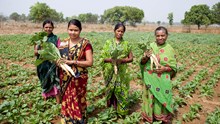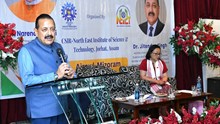
Recent reports of Human Metapneumovirus (HMPV) outbreaks in China have raised concerns worldwide. Countries including India are closely monitoring the situation, emphasizing the importance of understanding this respiratory illness. Although health authorities have reassured the public that there is no immediate reason for alarm, HMPV’s growing presence calls for heightened awareness. Here is everything you need to know about this virus.
What is HMPV Virus?
Human Metapneumovirus (HMPV) is a respiratory virus that typically causes mild to moderate flu-like symptoms. It is most prevalent during the winter and early spring months and is primarily transmitted through direct contact with infected individuals or contaminated surfaces. First identified in 2001 by Dutch researchers, HMPV is part of the Pneumoviridae family, which includes the Respiratory Syncytial Virus (RSV). However, serological evidence suggests that HMPV has been circulating among humans since at least 1958.
HMPV Symptoms
HMPV’s symptoms resemble those of other respiratory viruses, including:
-
Coughing
-
Fever
-
Sore throat
-
Runny or congested nose
-
Wheezing or difficulty breathing in severe cases
The virus is recognized as a significant cause of acute respiratory infections, especially in children. While most individuals recover with rest and hydration, those with weakened immune systems, the elderly, and young children are at risk of developing severe complications, such as pneumonia or bronchiolitis.
How Does HMPV Spread?
HMPV is primarily transmitted through:
-
Respiratory droplets from coughing or sneezing.
-
Direct contact, such as shaking hands.
-
Touching contaminated surfaces and subsequently touching one’s face.
This ease of transmission underscores the need for preventive measures, especially during peak seasons.
Who is at Risk?
While HMPV can infect individuals of all ages, certain groups are more susceptible:
-
Young children: Infants and toddlers, especially those under five, are at heightened risk, with 5-16% of cases potentially leading to lower respiratory tract infections.
-
The elderly: Aging immune systems make older adults more vulnerable to severe symptoms.
-
Immunocompromised individuals: People with weakened immune systems face a higher risk of complications.
Comparison to COVID-19
HMPV shares similarities with COVID-19 in terms of transmission and symptoms, such as cough, fever, and shortness of breath. Both viruses spread through respiratory droplets and contaminated surfaces. However, unlike COVID-19, which sparked a global pandemic, HMPV has not caused widespread panic due to its relatively lower severity in the general population.
Prevention and Management
Currently, there is no vaccine or antiviral treatment for HMPV. Most cases resolve with supportive care, such as rest, hydration, and symptom management. However, severe cases may require hospitalization and oxygen therapy.
To reduce the risk of infection, health experts recommend the following measures:
-
Practice good hygiene: Wash hands frequently with soap and water for at least 20 seconds.
-
Avoid face touching: Prevent the virus from entering through your mouth, nose, or eyes.
-
Disinfect surfaces: Regularly clean commonly touched areas, such as doorknobs and mobile devices.
-
Wear masks in crowded spaces: This is especially important during outbreaks.
-
Stay home if unwell: Prevent spreading the virus to others by isolating yourself when sick.
Individuals displaying cold-like symptoms should also:
-
Cover their mouth and nose when coughing or sneezing.
-
Avoid sharing personal items like utensils and cups.
-
Refrain from physical contact.
The recent rise in Human Metapneumovirus (HMPV) cases in China highlights virus's potential impact on global health. In response, Indian health officials have recently held meetings to assess the situation and strengthen preparedness measures. Although HMPV is not a new virus, it has drawn increased attention due to its similarities to other significant respiratory illnesses.
Currently, there is no specific vaccine or antiviral treatment for HMPV, making preventive measures the most effective line of defense. Promoting heightened vigilance, maintaining good hygiene practices, and raising public awareness are critical steps in mitigating the spread and impact of this respiratory virus.

















